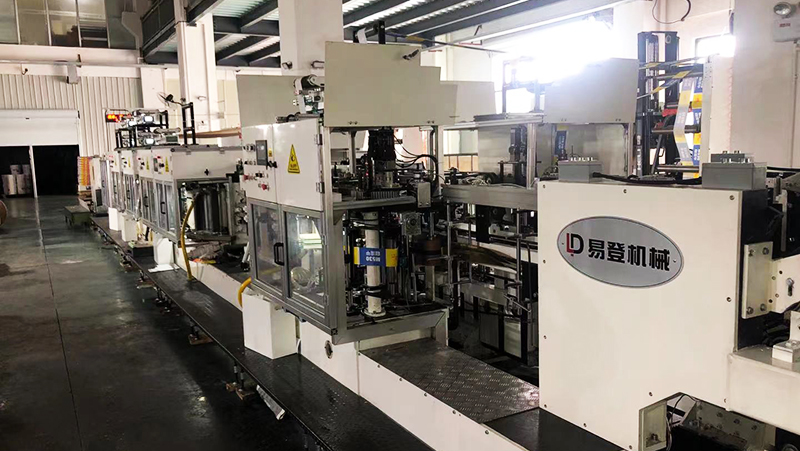Advanced Paper Bag Machine for Composite Materials: Revolutionizing Sustainable Packaging Solutions
Release time:2025-05-10 Classification:Knowledge
The demand for durable, eco-friendly packaging solutions has driven significant advancements in manufacturing technology. Among these innovations, the paper bag machine for composite materials stands out as a critical tool for producing high-strength, lightweight, and recyclable packaging. Designed to handle composite substrates—such as layered paper with biodegradable films or reinforced fibers—this machinery combines precision engineering with sustainability, meeting the needs of industries prioritizing both performance and environmental responsibility.

Key Features of Composite Material Paper Bag Machines
- Versatile Material Compatibility
Modern paper bag machines are engineered to process composite materials, including paper-polymer laminates, fiber-reinforced sheets, and coated substrates. This flexibility allows manufacturers to create bags with enhanced barrier properties (e.g., moisture resistance) while maintaining recyclability. - High-Speed Automation
Equipped with servo-driven systems and programmable logic controllers (PLCs), these machines deliver consistent output at speeds exceeding 200 bags per minute. Automated feeding, cutting, and sealing mechanisms minimize human intervention, reducing errors and optimizing production efficiency. - Customizable Design Capabilities
From handle attachment to gusset formation, the machinery supports customizable configurations. Advanced models integrate digital printing units for on-demand branding or labeling, eliminating the need for post-production processes. - Energy Efficiency
Energy-saving components, such as variable frequency drives (VFDs) and heat recovery systems, reduce power consumption by up to 30% compared to conventional models. This aligns with global sustainability goals and lowers operational costs.
Applications Across Industries
Composite material paper bags are widely used in:
- Food Packaging: For dry goods, baked items, and frozen products requiring moisture barriers.
- Retail & E-commerce: Durable bags for heavy items like apparel, electronics, or luxury goods.
- Industrial Use: Chemical-resistant packaging for fertilizers, construction materials, or pharmaceuticals.
Sustainability Advantages
By utilizing composite materials, these machines enable the production of bags that balance strength and eco-friendliness. Many composites are designed for easy separation during recycling, ensuring compliance with circular economy principles. Additionally, reduced material waste during manufacturing further enhances their environmental appeal.
Future Trends
Ongoing R&D focuses on integrating AI-driven quality control systems and IoT-enabled predictive maintenance. Innovations in bio-based composite materials—such as algae-coated paper or mycelium-reinforced substrates—are also expanding the scope of applications, positioning paper bag machines as pivotal tools in the transition to greener packaging.
The paper bag machine for composite materials represents a convergence of technological innovation and ecological responsibility. With its ability to produce robust, customizable, and sustainable packaging at scale, this machinery is reshaping industries while addressing pressing environmental challenges. As material science evolves, these machines will continue to play a vital role in advancing the global sustainable packaging landscape.






